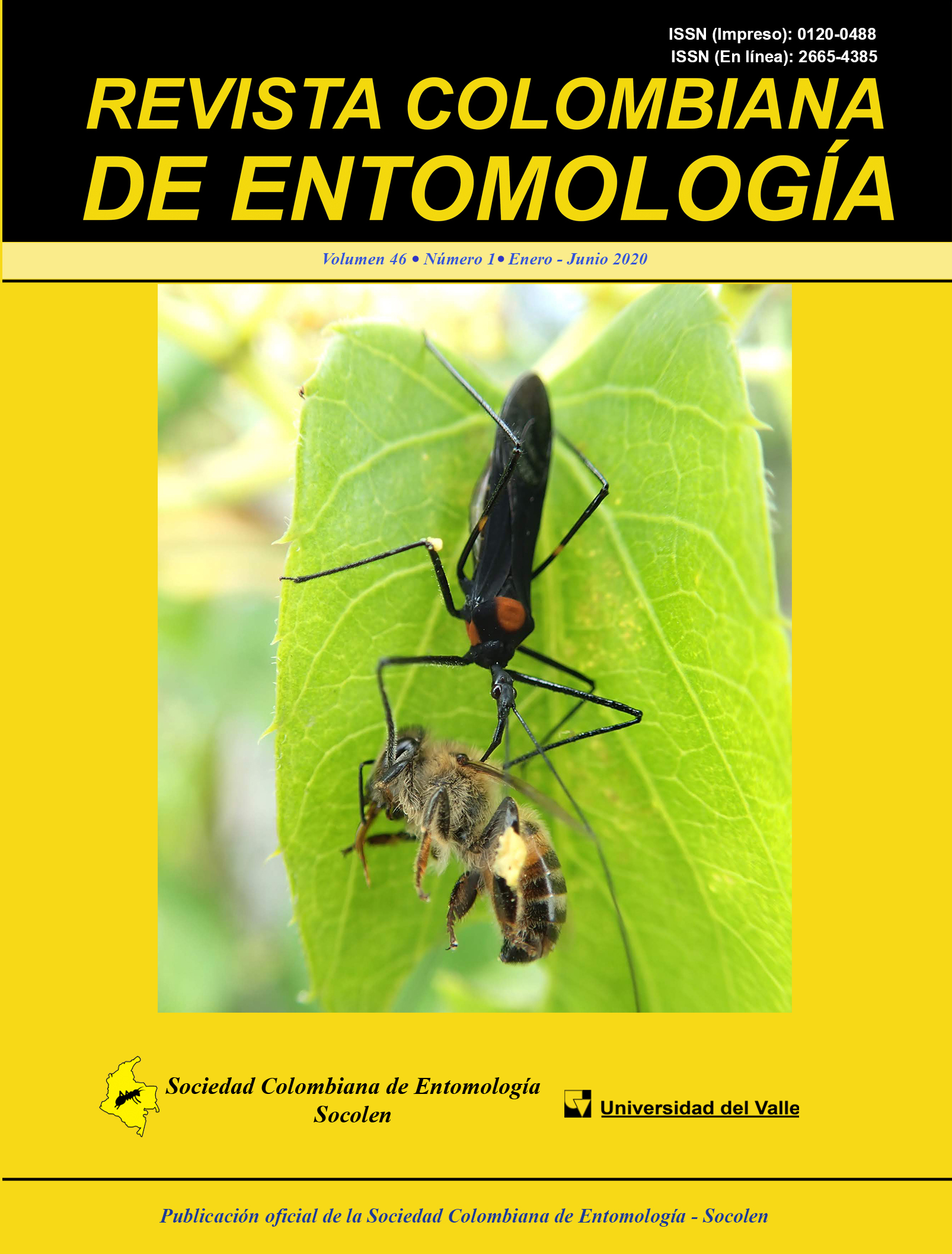Macromorphology and radial growth of entomopathogenic fungi strains suplement with lepidoteran powder
Keywords:
Growth fungi, entomopathogens, fungi, Lepidoptera, macromorphology, medium supplementMain Article Content
The macromorphology of Beauveria bassiana (B1), Metarhizium anisopliae (M1) and Isaria javanica (HPI-210) strains was studied, as well as its radial growth at temperatures of 25, 28, 30, 35 and 40 °C in PDA medium supplemented with powder of Diatraea considerata, Spodoptera frugiperda and Galleria mellonella. The fungi were inoculated by adding 2 µl of a suspension with 1 x 107 spores/ml. Afterwards the radial strains growth in mm/d was measured during 15 d. To determine the interaction between the three strains, the three lepidopteran powders, control PDA and the five temperatures, a factorial analysis 3 x 4 x 5 was used; fungi growth data was analyzed by ANOVA and Tukey test. The macromorphological characteristics of each species were studied, finding significant statistical differences in the growth at different temperatures, with respect to the control. The optimal growth for the three fungi was at 28 °C. Strain B1 supplemented with D. considerata powder grew 2.76 ± 0.06 mm/d, M1, G. mellonella 2.77 ± 0.02 mm/d and M1 HPI-210 D. considerata 3.27 ± 0.06 mm/d. Strains B1 grew 0.45 ± 0.03 mm/d and M1 1.22 ± 0.03 at 30 °C, while HPI-210 did not grow after 28 °C. These results suggested that the strains were induced by medium contained insect supplementation; at 28 °C, HPI-210 obtained the best growth/d (F = 25.24, E8, P = 0.0001), followed by M1 and B1, while M1 supplemented with S. frugiperda grew best at 30 °C (F = 38.33, E8, P = 0.0001). These results of radial growth, macromorphology and tolerance of strains at temperature, allow the selection of the best strains to assess its virulence in insect pests.
Downloads

This work is licensed under a Creative Commons Attribution-NonCommercial-ShareAlike 4.0 International License.
Authors retain the copyright on their work and are responsible for the ideas expressed in them. Once a manuscript is approved for publication, authors are asked for a publication license for the term of legal protection, for all territories that allows the use, dissemination and disclosure of the same.

